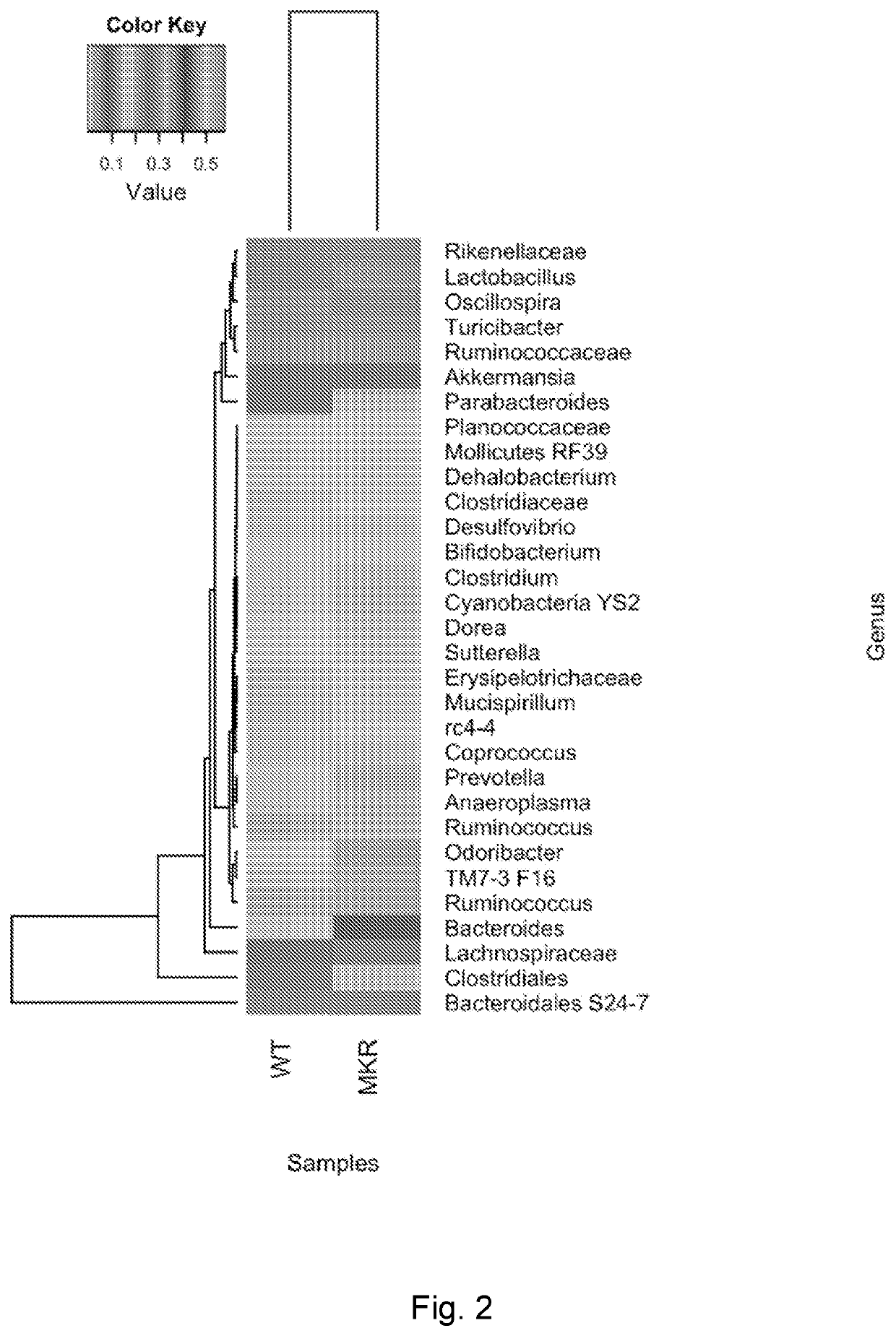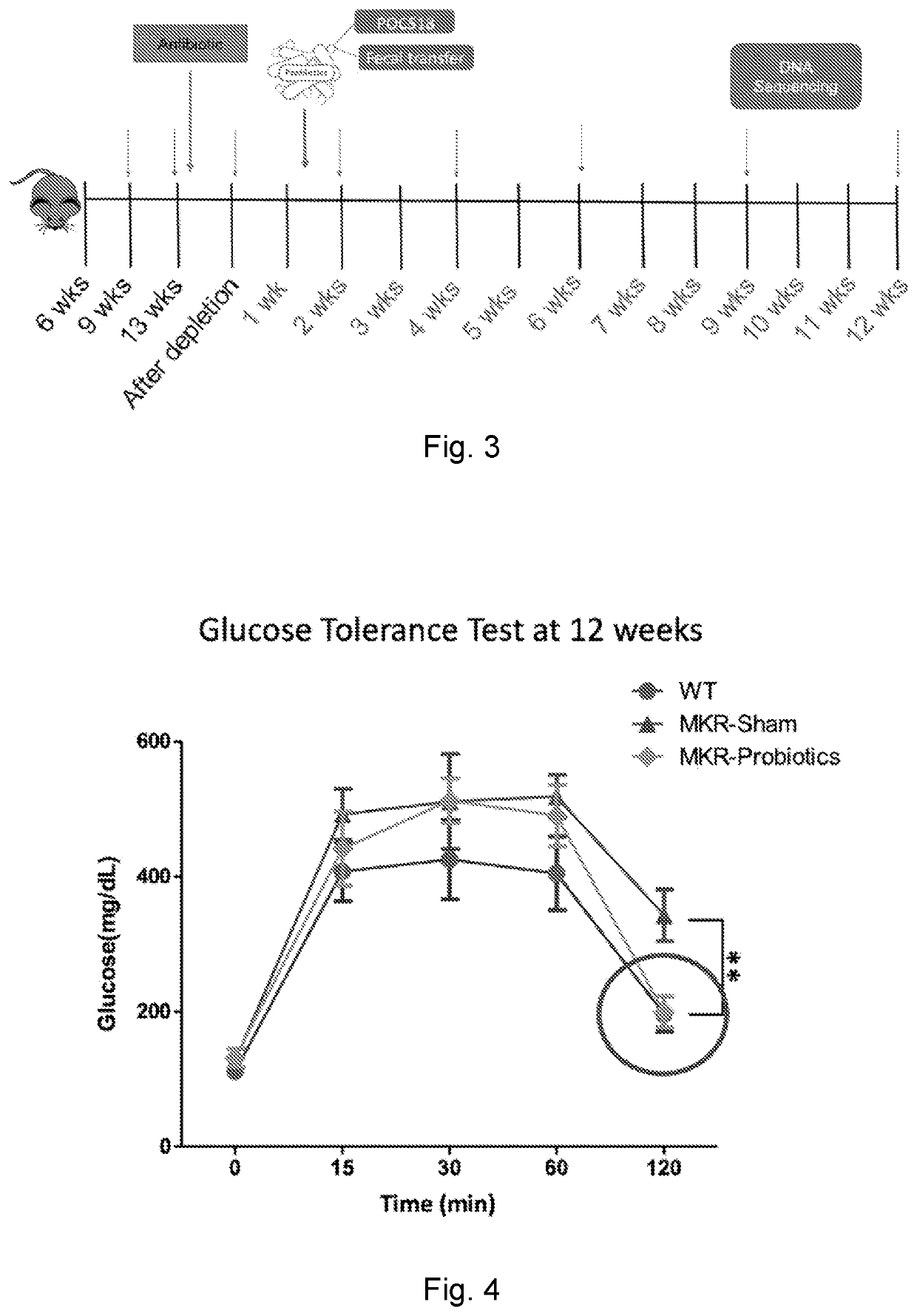Probiotic compositions and methods of use
- Summary
- Abstract
- Description
- Claims
- Application Information
AI Technical Summary
Benefits of technology
Problems solved by technology
Method used
Image
Examples
example 1
[0092]Bacterial strains were isolated from animal or human samples and sequenced, identified and stored at −80° C. until used or were obtained from ATCC. To prepare the probiotic bacterial cocktail, each bacterial strain was individually inoculated into a broth and incubated at 37° C. for 48-72 h. Cell suspensions was transferred to 50 ml sterile tubes under aseptic conditions and centrifuged at 4000 g for 10 min. The supernatant was discarded, and the cultured cells was washed twice using phosphate buffered saline (PBS). The suspension containing bacteria cells (108-109 CFU / ml) were directly added to the carboxymethylcellulose sodium (CMC) solution. CMC solution (1% w / v) for lyophilization was prepared by the gradual addition of 1 g CMC powder to 100 ml distilled water at 70° C. The solution was mixed well using a magnetic stirrer at 500 rpm for 40 min to ensure uniform dispersion. When the solution temperature had cooled to 37° C., bacteria was added to the solution to reach a fin...
example 2
[0093]We found that the cancerous pancreas harbors a markedly more abundant microbiome compared to normal pancreas in mice and humans. Further, we found that ablation of the microbiome in mice protected against pre-invasive and invasive PDA. Conversely, transfer of bacteria from PDA-bearing hosts, but not controls, reversed this tumor-protection. We showed that the microbiome exerts potent suppressive influences on the inflammatory tumor microenvironment. Specifically, the microbiome collectively sets the tolerogenic inflammatory program in PDA promoting the recruitment of myeloid-derived suppressor cells (MDSC) and M2-like macrophages, driving Th2 and Treg differentiation of CD4+ T cells and suppression of CD8+ T cells. Further, we showed that ablating pathogenic bacteria upregulated PD-1 expression on T cells and enabled efficacy for checkpoint-based immunotherapy. Our data (FIG. 1) indicates the microbiome can be used as a therapeutic target in both the modulation of disease prog...
example 3
[0095]This example describes modulating gut microbiome with the probiotics of this disclosure to result in better glucose tolerance. The gut microbiome plays an important role in T2DM metabolic disorder and presents a potential target for bio-therapeutic treatments. Our preliminary data on 16S rRNA using MiSeq and mouse fecal samples as a proof-of-principal to determine whether the microbiome in our WT and MKR (Muscle IGF-I receptor (IGF-IR)-lysine-arginine) mice model was altered. Heat map analysis indicated that bacterial communities in the T2DM and WT mice (age and gender matched littermate (n=3 / group)) were different and formed two separate clusters indicative of colonization of T2DM mice with a distinct microbiome with progressive hyperglycemia. There were marked increases in the prevalence of phyla Actinobacteria, Deferrlbacteres, Tenericutes and TM7 in T2DM group. At the genus level, Bacteroides, Ruminococcus, Parabacteroides, Prevotella, Oscillospira, Ruminococcus, Rickenell...
PUM
| Property | Measurement | Unit |
|---|---|---|
| Time | aaaaa | aaaaa |
| Time | aaaaa | aaaaa |
Abstract
Description
Claims
Application Information
 Login to View More
Login to View More - R&D
- Intellectual Property
- Life Sciences
- Materials
- Tech Scout
- Unparalleled Data Quality
- Higher Quality Content
- 60% Fewer Hallucinations
Browse by: Latest US Patents, China's latest patents, Technical Efficacy Thesaurus, Application Domain, Technology Topic, Popular Technical Reports.
© 2025 PatSnap. All rights reserved.Legal|Privacy policy|Modern Slavery Act Transparency Statement|Sitemap|About US| Contact US: help@patsnap.com



